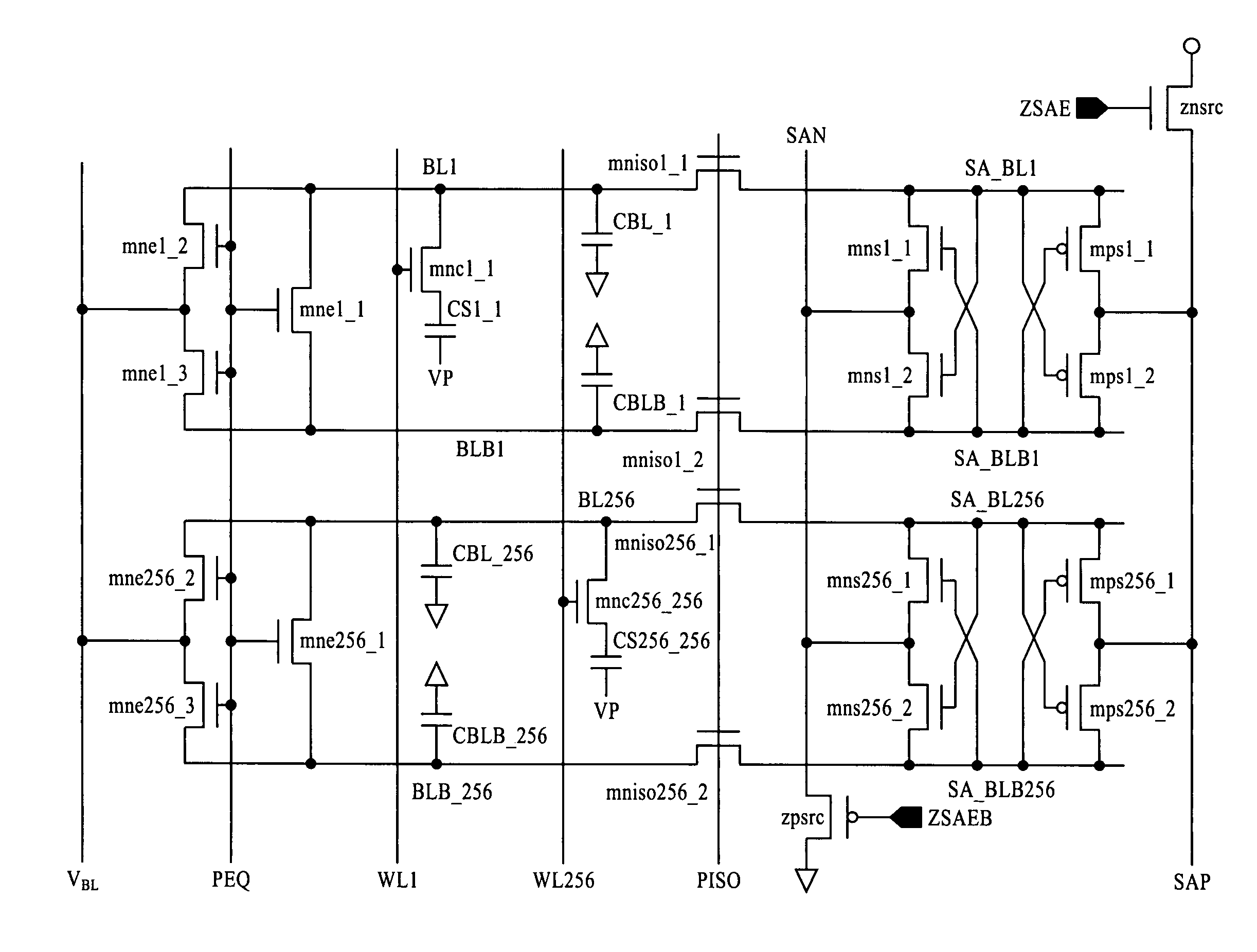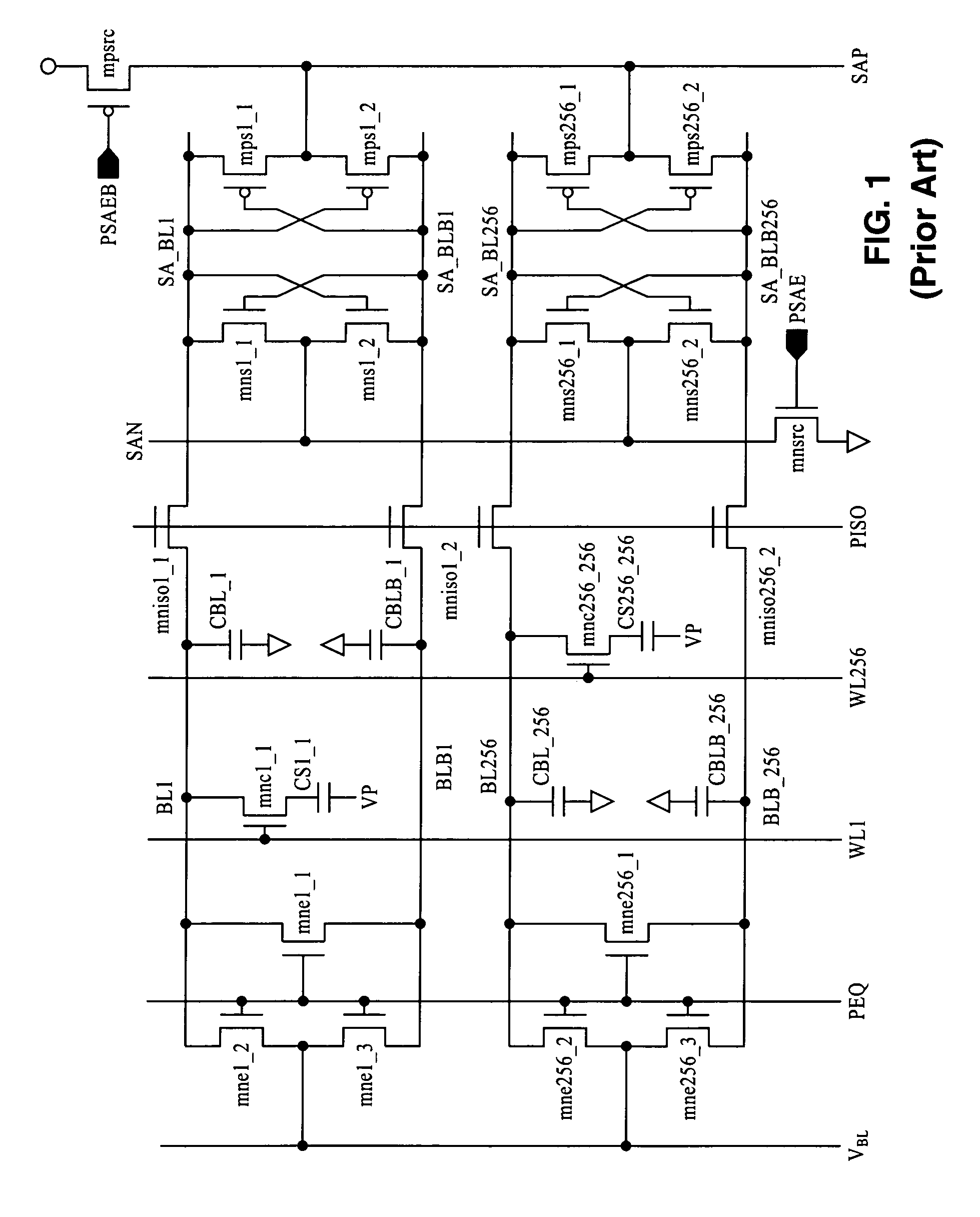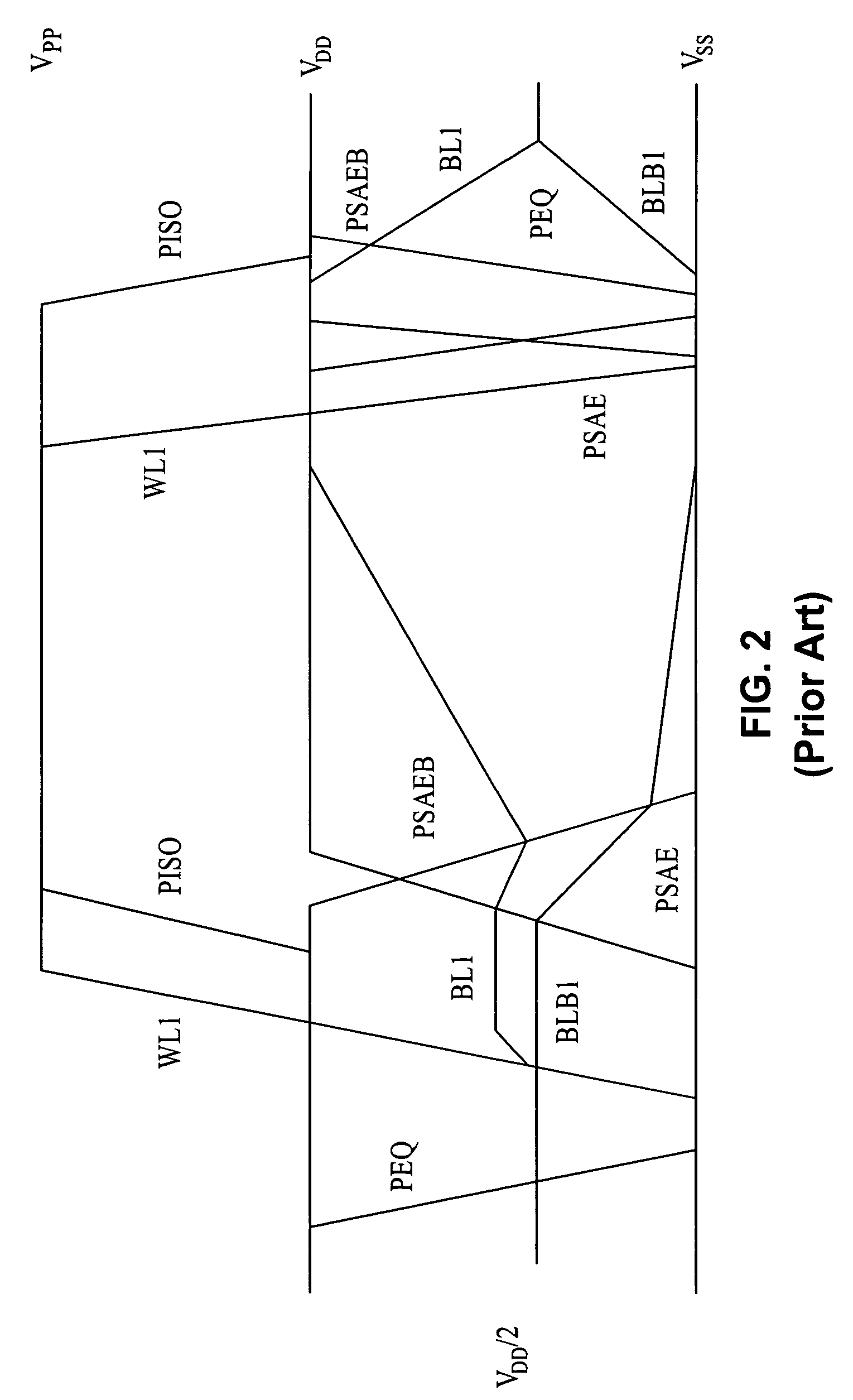Low voltage operation DRAM control circuits
a control circuit and low voltage technology, applied in the field of semiconductor memory, can solve the problems of exponential increase of sub-threshold leakage current flowing through the transistor, reduce the voltage, and reduce the performance (speed) of the transistor, so as to reduce the leakage current, reduce the charge flow, and increase the sense speed
- Summary
- Abstract
- Description
- Claims
- Application Information
AI Technical Summary
Benefits of technology
Problems solved by technology
Method used
Image
Examples
Embodiment Construction
[0056]Referring more specifically to the drawings, for illustrative purposes the present invention is embodied in the apparatus generally shown in FIG. 4 through FIG. 11. It will be appreciated that the apparatus may vary as to configuration and as to details of the parts, and that the method may vary as to the specific steps and sequence, without departing from the basic concepts as disclosed herein.
1. Self Reversed-Biased Complementary Sensing Scheme.
[0057]FIG. 4 illustrates an example of a new sense amplifier structure to suppress leakage current. This differs from conventional structures in the type of source transistors which are utilized and the mechanisms of driving the sense and restore lines. In the conventional DRAM core of FIG. 1, a drain with PMOS source transistor mpsrc is connected to a source of PMOS transistors mps1_1 and mps1_2, and a drain of NMOS source transistor mnsrc is connected to a source of NMOS transistors mns1_1 and mns1_2. This form of latch-drain combin...
PUM
 Login to View More
Login to View More Abstract
Description
Claims
Application Information
 Login to View More
Login to View More - R&D
- Intellectual Property
- Life Sciences
- Materials
- Tech Scout
- Unparalleled Data Quality
- Higher Quality Content
- 60% Fewer Hallucinations
Browse by: Latest US Patents, China's latest patents, Technical Efficacy Thesaurus, Application Domain, Technology Topic, Popular Technical Reports.
© 2025 PatSnap. All rights reserved.Legal|Privacy policy|Modern Slavery Act Transparency Statement|Sitemap|About US| Contact US: help@patsnap.com



